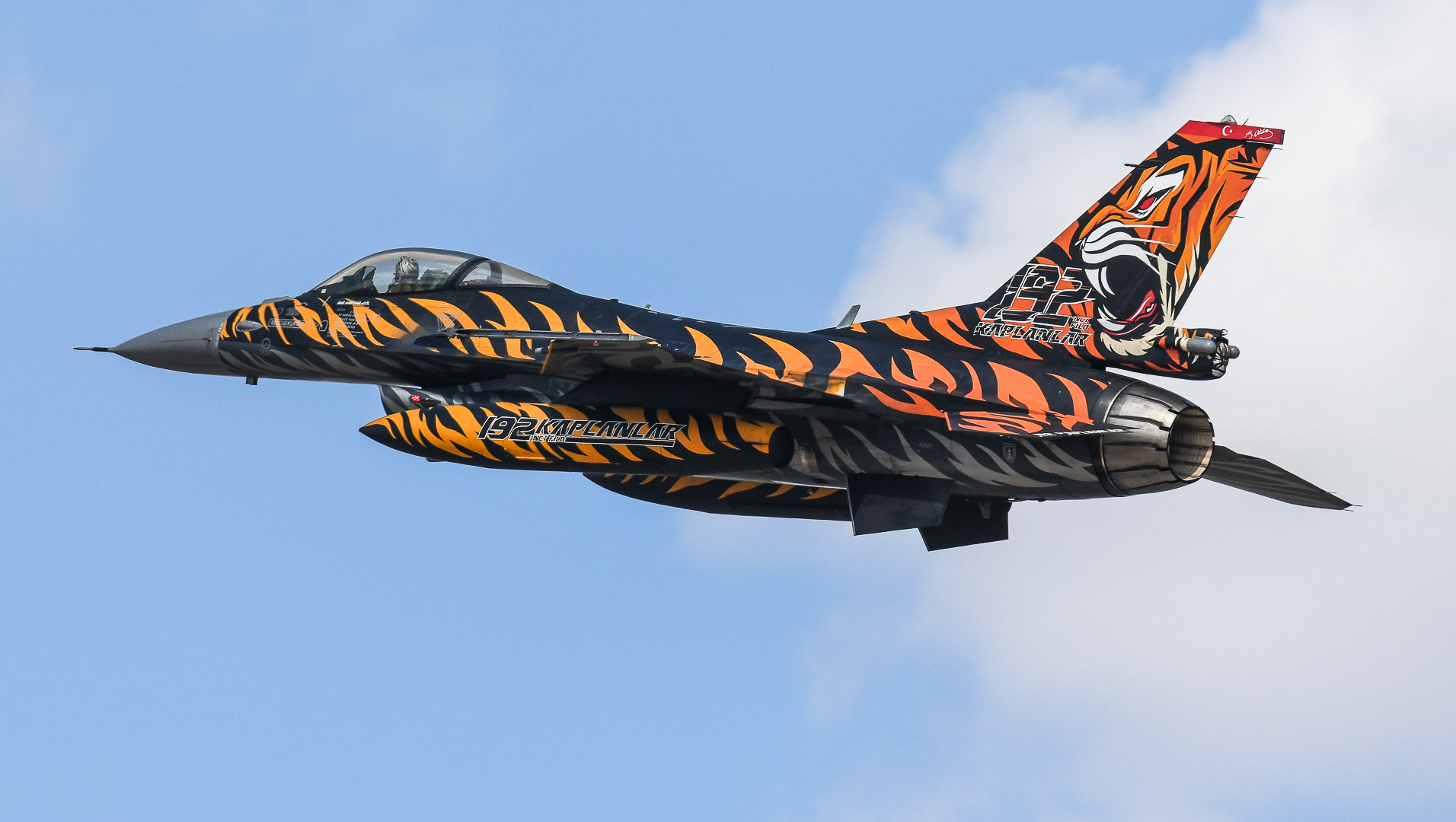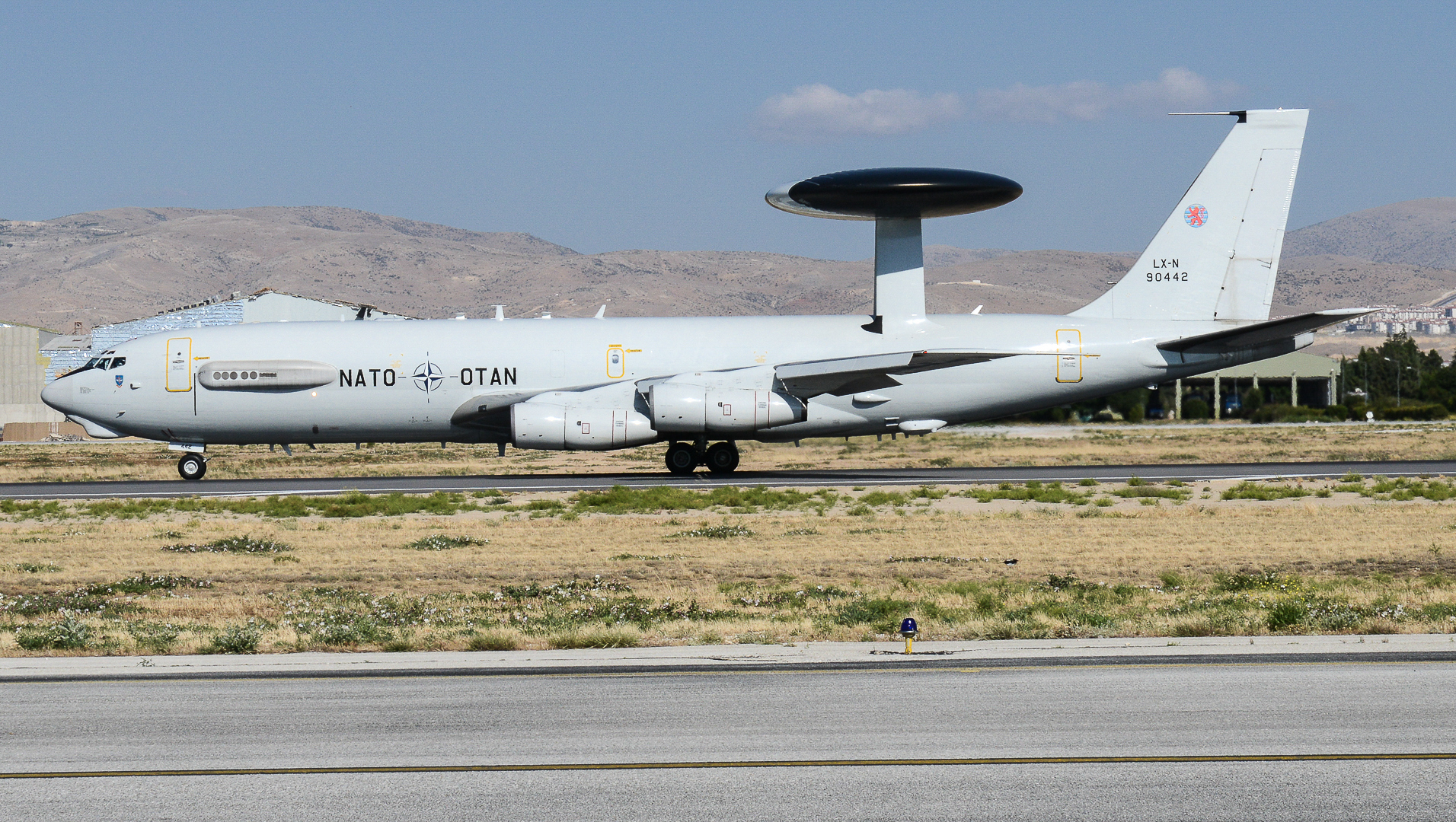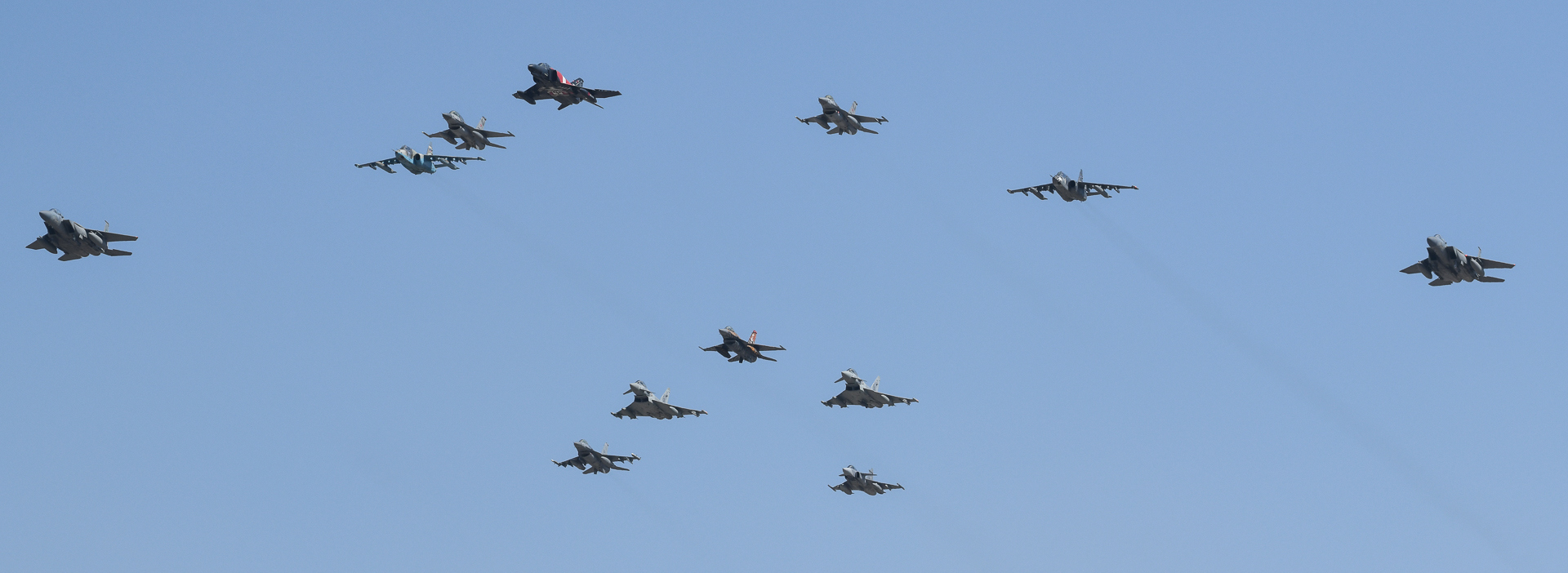Anatolian Eagle 2025 – Konya Turkey
Report and photos by Peter Van den Berg
July 15, 2025
The 2025 edition of the annual Anatolian Eagle exercise was once again hosted at the 3rd Main Jet Base Command in Konya, Turkey. Held from June 23 to July 4, 2025, the exercise was organized by the Anatolian Eagle Training Centre. This facility is one of the three tactical training centers with similar set-up in the world, and the only tactical training center in Europe. The exercise covers a vast operational area of 300 by 400 kilometers, stretching from Konya to Ankara and encompassing Turkey’s second-largest salt lake. The proximity of this training zone allows for minimal transit times, offering a significant advantage over similar exercises conducted elsewhere in Europe.
The three air-to-ground ranges often employed are Karamar, Tersakan and Koc. These ranges utilize surface-to-air threats in the form of SA-6, SA-8, SA-11 and ZSU-4 weapon systems for simulating realistic and challenging combat missions.

History & goals
The origins of Anatolian Eagle date back to its first edition in 2001, when the modernization of the Turkish Air Force’s fighter fleet created the need for a dedicated training facility. Drawing on operational experience from the conflicts in Bosnia and Kosovo, the Turkish Air Force reached a level of capability that allowed it to host its own large-scale exercise. As a result, Anatolian Eagle was established—modeled after renowned exercises such as Red Flag and Maple Flag—to provide a platform for joint training with allied forces. The infrastructure at Konya, including dining facilities and operations buildings, meets the same high standards as those found at Red Flag and Maple Flag.
The goals of the exercise are diverse and go far beyond simply improving pilots operational training. Air defense personnel and controllers work closely together to test and refine joint operational procedures, with the aim of minimizing losses during real-world missions and maximizing overall mission success. All of this takes place within the realistic operational environment simulated by Anatolian Eagle.
Training tools like the Air Combat Maneuvering Instrumentation (ACMI) and the Mission Evaluation System allow for fast and accurate assessment of the tasks carried out during the exercise. These tools provide all participants with a sophisticated joint training environment that supports the exercise’s primary objective: enhancing combat readiness.
Moreover, the exercise serves as an excellent platform for testing and experimenting with new tactics and techniques.

Participating countries & aircraft
During the 2025 iteration of Anatolian Eagle, the skies over Turkey hosted a powerful coalition of allied air forces. Alongside the Turkish Air Force, participants included the United States, Hungary, Azerbaijan, Jordan, Qatar, and Saudi Arabia. Their pilots trained together to enhance joint operational awareness and refine tactics for large-scale air operations. A key enabler in this exercise was NATO’s E-3A Sentry, deployed from Geilenkirchen, Germany. This airborne Command and Control platform played a main role in orchestrating integrated battle management in contested airspace—a mission it has successfully supported in previous Anatolian Eagle exercises.
Anatolian Eagle is an excellent example of this shared training…
“We highly value NATO partnerships with your nations, especially now, working together through collective security and shared training,”
said Air Marshal Johnny Stringer, Acting Commander, Allied Air Command.
“Anatolian Eagle is an excellent example of this shared training,” he added.
Anatolian Eagle ’25 had seven different nationalities participating with a total of about 72 aircraft with the following line-up:
- Turkish Air Force F-16 C F-16D / E-7T / Anka-S UAV / Akinci Combat UAV
- Azerbaijani Air Force 2x SU-25 Eskadrilya Kürdamir AB
- Jordan 3x F-16AM/BM 1 SQN Al Asraq AB
- Saudi Arabia 6x F-15SA 92 SQN Hafr Al Batin AB
- Qatar 3x EF-2000 1 Flying Wing Tamim AB
- Hungar 3x JAS-39C MH101 Kecskemet
- United States 12x F-16C / F-16D 510 FS Aviano AB
- NATO E-3 AWACS Airborne Early Warning & Control

July 2th Elephant Walk
In a powerful display of multinational air power and operational readiness, Konya Air Base hosted a breathtaking Elephant Walk as part of the Anatolian Eagle 2025 exercise. The event featured 30 military aircraft from participating nations including Turkey, United States, Azerbaijan, Jordan, Qatar, and Saudi Arabia, showcasing a unified front in tactical air operations.
The Elephant Walk, held during the exercise’s official spotters day, saw a diverse lineup of aircraft including F-4E, F-16s, F-15SA, EF-2000, SU-25, E-7T, JAS-39C and CN-235-100M, taxiing in close formation along the runway. This symbolic maneuver highlights the strength, discipline, and coordination of allied air forces, reinforcing their commitment to collective security and strategic cooperation.
“The Elephant Walk is more than just a visual spectacle, it’s a testament to the readiness and unity of our partner nations,” said a spokesperson for the Turkish Air Force. “Anatolian Eagle continues to strengthen our shared capabilities and deepen our strategic ties.”

Missions & evaluations
Working with other air forces builds stronger cooperation and improves how we operate together. The goal is to exchange insights and improve combat readiness through joint daylight operations. Key missions during the exercise include Air Surface Force Air Operations, Composite Air Operations (COMAO), and non-COMAO sorties. These activities enhance participants’ training by requiring them to plan and execute complex air missions targeting both tactical and strategic objectives. The simulated targets are defended by realistic air defense systems—both land- and sea-based—creating an operational environment that includes fighter aircraft and surface-to-air missile systems. 
To simulate low-RCS cruise missiles, Turkish Aerospace Industries (TAI) deployed its SIMSEK and SUPER SIMSEK stealth target drones, which were launched from ANKA 3 UAVs. These target drones can reach speeds of up to Mach 0.8.
In addition, SEAD (Suppression of Enemy Air Defenses) missions were conducted, with Turkish F-16s armed with AGM-88 HARM anti-radiation missiles engaging “Red” force air defense systems positioned in the Konya training range. These operations tested not only the pilots’ capabilities but also the effectiveness of mission planners, command and control personnel, and ground support teams.
Throughout the exercise, teams took turns serving as the Package Lead, with mission complexity increasing progressively. Two missions were flown each day during daylight hours. Unlike Red Flag, which typically includes both day and night operations, this was strictly a day-only exercise. During Anatolian Eagle 2025, The exercise featured participation from 32 international aircraft and 40 Turkish aircraft.
Participants were divided into two teams—Red and Blue—each with separate briefing rooms. Teams did not interact prior to missions, though debriefings were conducted jointly afterward. The objectives of Anatolian Eagle were successfully met on Friday, July 4, 2025.
Over the years, this exercise has matured into one of NATO’s most advanced multinational training platforms. Featuring cutting-edge infrastructure, complex operational scenarios, and integrated mission planning, the 2025 iteration showcased the Alliance’s preparedness to counter both conventional and emerging threats across the Euro-Atlantic region.
This year’s exercise also highlighted the Turkish Air Force’s increasing focus on technological advancement. Key capabilities on display included network-centric warfare systems, Link 16 tactical data exchange, and unmanned aerial vehicle (UAV) integration—underscoring Turkey’s intent to position itself as a leading force in next-generation air operations.
Peter van den Berg is from Coevorden, Netherlands. His love for military aviation began in 1980. The first airbase where he photographed was Soesterberg, Netherlands where the 32 TFS was stationed with the F-15. After photographing many military exercises in Europe over the years, Peter decided to spend the last 15 years visiting Asia and the USA. He regularly writes books for Veldhuis Media Group. Peter has written books about NAS Fallon, Red Flag and the Japanese Airforce.
In addition to publishing books, Peter is working as a teacher for senior secondary vocational education.
Peter uses Nikon equipment.
Peter can be reached at: [email protected]


